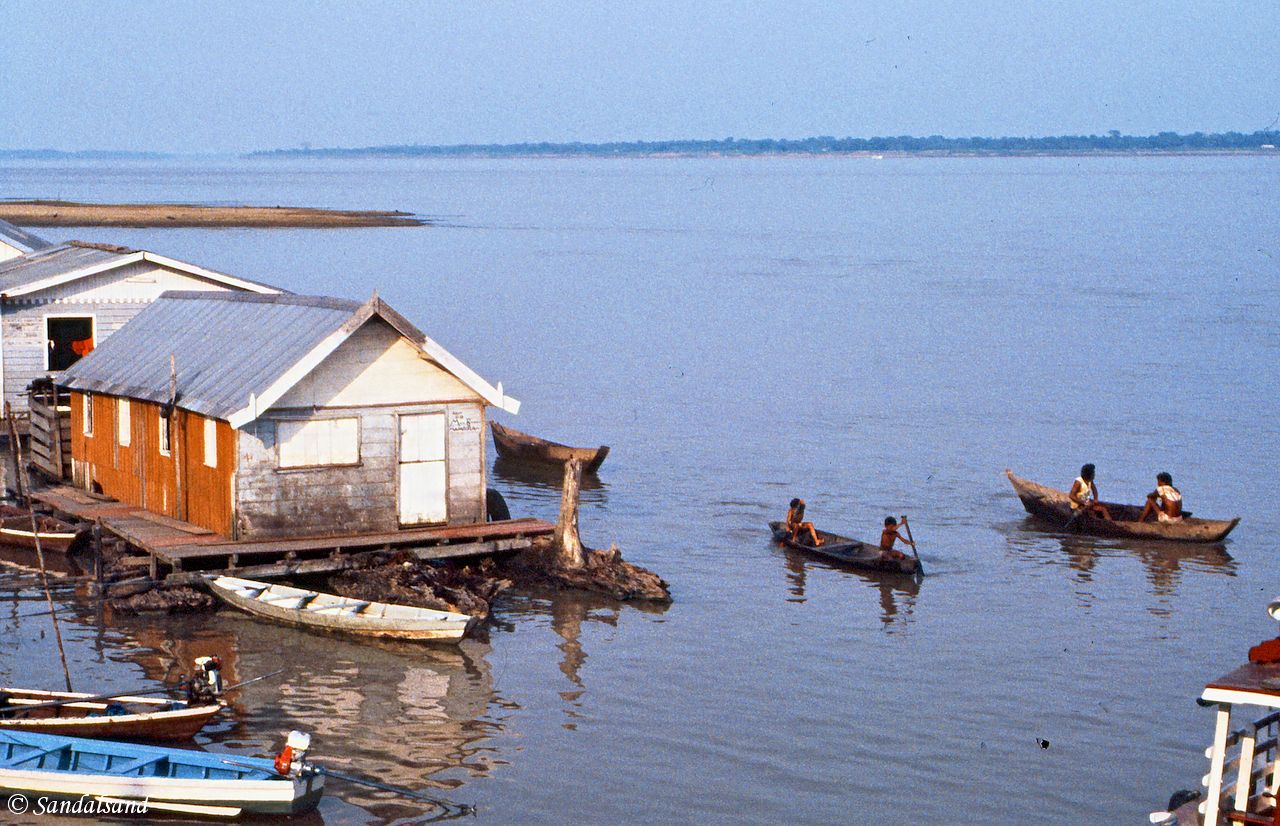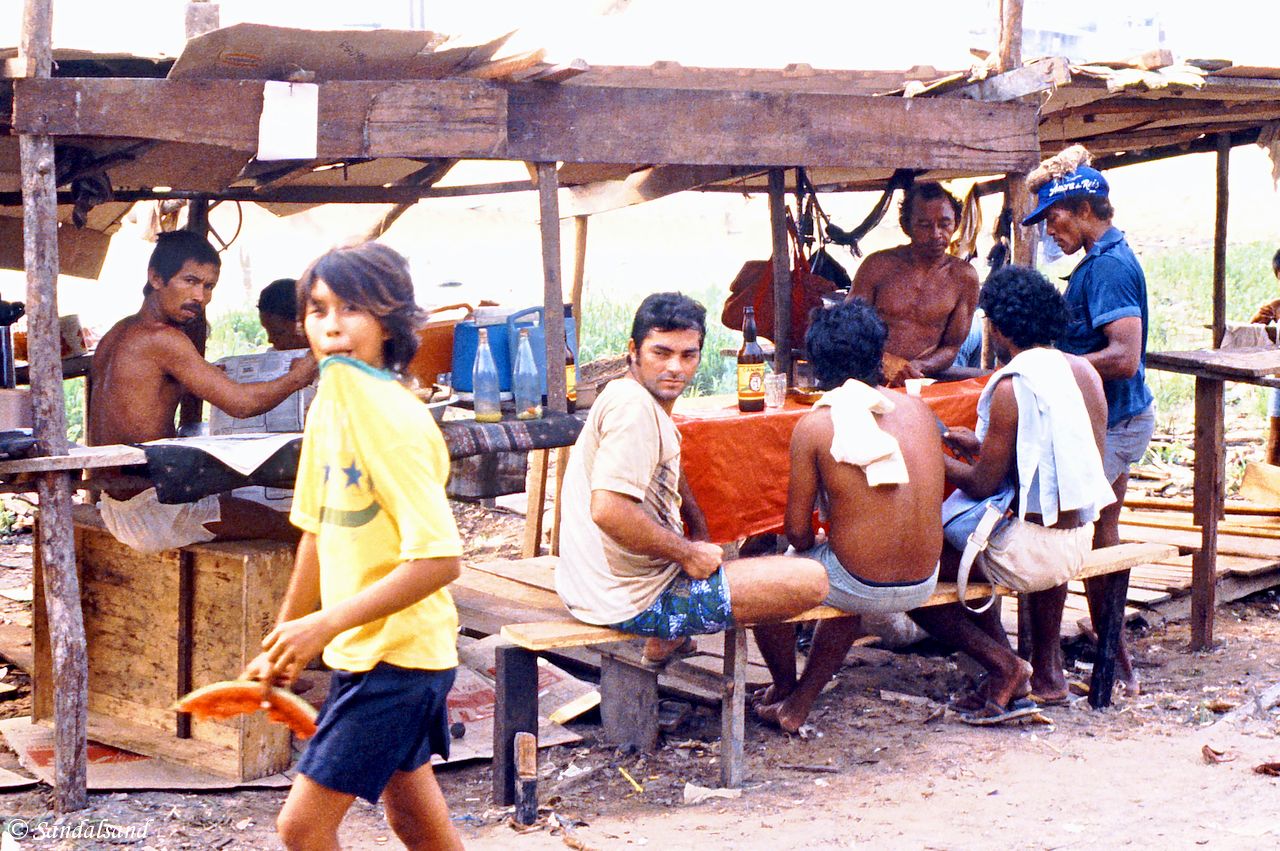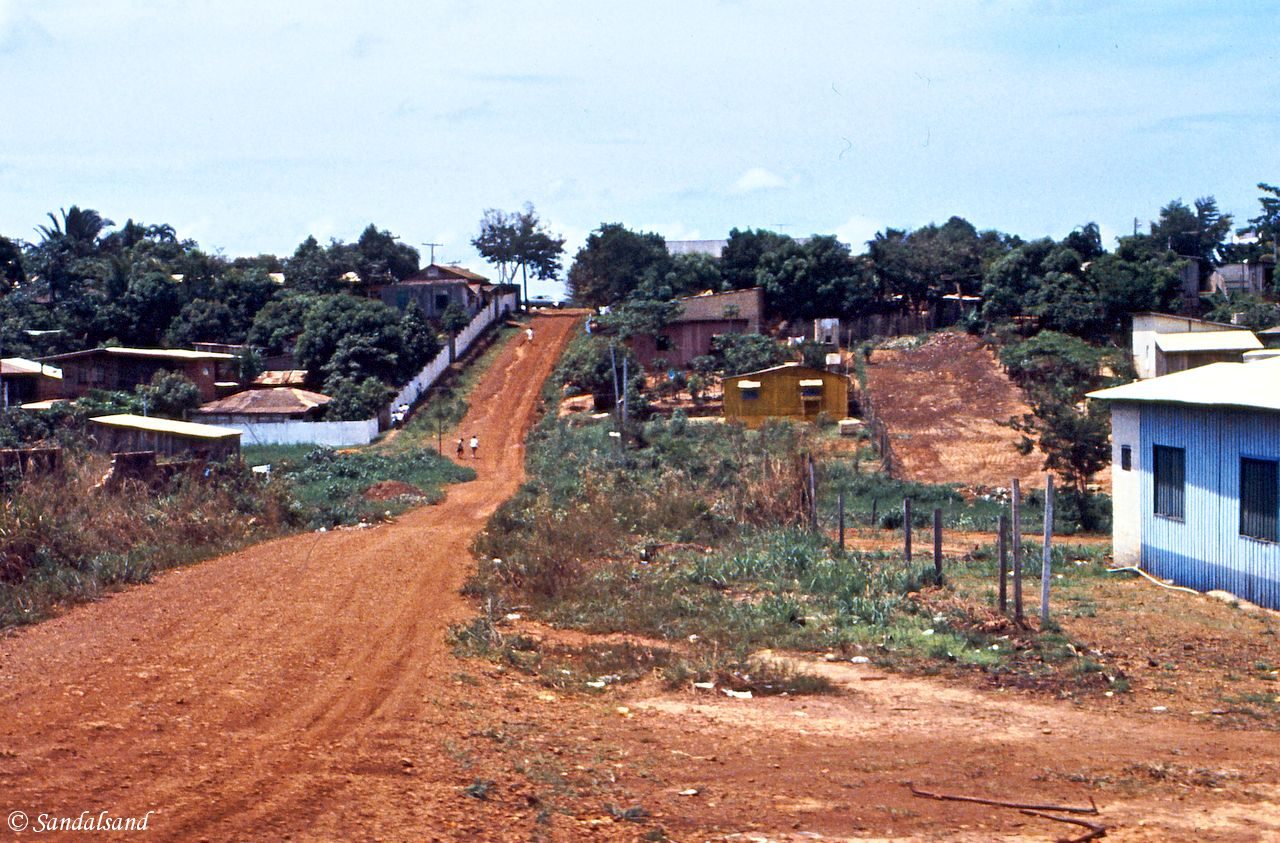Impressions from Brazil: We have now been almost exactly a month in Brazil, thirty days more precisely. That is almost what we had planned or expected. It is time for a review of all the impressions I have.
This article is part of a travelogue from of a five month journey in 1987-1988 to several countries in South America: Brazil, Peru, Ecuador, Bolivia, Chile.
First the financials
We spent on average 16 US dollars a day each, of this 3 dollars was the average spending for 24 hotel nights.
The cities, countryside and scenery
Brazil seems incredibly varied in many ways.
On the one hand we have the large cities
We visited Rio and Belo Horizonte. They are both teeming cities with a population of more than a million and heavy traffic. What particularly struck me was how well adapted the network of roads and streets was to private transportation and to some degree also heavy transportation.
Wide avenues with three-four lanes in either direction allow a lot of traffic. Besides this one-way streets are popular among the authorities. Only a few city streets, even in the lesser towns, had two-way traffic. Cars are in general in good condition, with a lot of Volkswagen Beetles and the drivers are not so bad. The speed was fairly high and caused difficulties in crossing the streets and roads.
According to the young man from Switzerland we met in Leticia, Brazil’s capital of Brasilia was an extreme case of this. Everything was set up to satisfy motorised transportation because the city is spread out over a very large area. One might say the same thing about Cuiabá which we paid a visit. A city covering 12,000 square kilometres is not particularly small even though the centre was somewhat more pedestrian friendly. Belo Horizonte was like Brasilia in the sense that it was planned. The architecture was on the other hand less cold and “modern” then in the capital.
The pavements are out of this world. In many towns small stones, usually black and white, had been hammered down into the ground in fine patterns. Some places they had prefabricated tiles in wave patterns, inflicting an almost acute sense of seasickness.
On the other hand we have the countryside and landscape of Brazil

Beach near Angra dos Reis, south of Rio
The beaches north on the coast are supposed to be fantastic. We did not go there but took the opportunity to visit some in Rio and Angra dos Reis. The mountains of Minas Gerais might be called moors which to the west, in Mato Grosso, changes to wide ranging grasslands. The land looks fertile everywhere, but what we had learned before our arrival was that the north-eastern part of Brazil for years have been ravaged by draught.
The jungle or rainforest is different in every way. It is quite fantastic how much green, or should I say flora, it is able to sustain on only 30-40 cm of soil. It is certainly not odd that many raise their voices warning of a disturbance of the fragile ecological balance in these huge wetlands.
I mentioned earlier that I was struck by how little the vast grasslands in the middle of Brazil is being used. There were true enough fazenda by fazenda along the roads but the fields were not cultivated and there were few livestock grazing. It did not seem like the soil was thin, but where are all the small farmers (see below under the People section)?
The great variety of the landscape is reflected in the climate. It has been quite hot all the time. In the coastal region cooling winds come in from the ocean and in the highlands the altitude is a regulating factor. We were most shocked by the deep interior of Cuiabá and Porto Velho. There the heat was really oppressive making us wonder how people were able to cope. The jungle was hot and humid, but not more than 30 degrees and not equally perspiration provoking.

Houseboats and canoes on the Amazon
The people
I have never seen such a variation both in terms of ethnic groups, social divisions and subsequent economic differences.
The indigenous race – the Indians – is almost non-existent. They are highly decimated, oppressed and poor. The descendants of African slaves are a step higher up the ladder. We find them first of all along the coast, especially in the south from what I learned. The Europeans (mostly Portuguese by origin or first or second generation Brazilian) are on top in terms of wealth and status. Blond women are popular on advertisement boards. On the other hand the Caucasian race is so large that the largest variations in terms of standard of living are found within it.
Houses vary a lot too. Particularly in Rio we saw a number of edificios – flats in 5-7 storey buildings with private underground parking and a guard at the door. The poor areas and the slums (favelas) were of varying quality, ranging from sheds made of pieces of wood to semi-permanent concrete buildings which in some cases hardly would house poor people.
The development of Amazônia is of such a recent date that the towns in there have not had time to settle. Urban design and countryside buildings are seemingly unplanned and appear temporary. There are lots of wooden houses because the forest is just around the corner. Many of the houses are large too.
It is in this area we find the (almost only) small farming plots we noticed in Brazil. A family would come and settle by the road, burn the forest and put up some wooden boards for housing. They all seemed very basic. We saw a number of these places driving through the Amazon and during our excursion into the rainforest.

Manaus – Riverside area
Communication and transportation
I have mentioned the city streets already, see above. Across the country there are now several good major roads showing that the government is active in a) linking the parts of country closer together and b) allowing the peripheral regions an opportunity to build up their own industrial and business activities.
The Amazônia is naturally the least developed region. The standard of the roads that have been constructed in later years is varying as well, something we experienced on our bus trips. There are ever more roads being built and gradually they are also given asphalt concrete surfaces, a must in the rainy season.
Public transportation is (at least for Norwegians) cheap and effective. It is also easy to use, in two ways. Firstly, there is a central bus station in every town (Rodoviària), where all companies operate. Secondly, all bus companies have signs stating their destinations. The buses are fast and comfortable. Local city buses are numerous and cheap. They are old, rusty and dirty as well, but they go everywhere and are an adequate means of transportation.
The feeling of travelling
It felt good to go back on the road again – on another marathon journey. I’m still feeling good. I’m satisfied with all the impressions pouring in, everything I am able to experience ranging from the new, the strange and to the unknown.
I have now been to at least two of my main objectives: Rio de Janeiro and the Amazon. Even though it now seems unlikely that we’ll have a boat trip on the river, always in my dreams, I have by joining the three-day tour into the jungle satisfied that wish to some extent. Now the Andes Mountains are beckoning, in not a distant future: Only next week actually.
I have for the first time departed on a journey like this with a travelling companion. I have always been sceptical about that, for several reasons.
On the one hand this has perhaps been a way to rationalise away the fact that there has not been a companion to join. This is a fact that sometimes and somewhere has led to situations of solitude and even constraints in my activities.
On the other hand the disadvantage of a travelling companion is the limitation it puts on my freedom. I will have to take my companion into consideration when plans are made and wishes realised. This last part is probably the main argument and the reason of my previous doubts.
So far, after a month on the road, my scepticism has been eradicated. (Here I levy censorship on including more text from my diary about this subject. It deals with my travelling companion and is of a private character. Let me just say that my travelling companion was my girlfriend, and we made it through this trip and many subsequent trips with success.)
Last thoughts
The way you pay in Brazilian shops is incredibly cumbersome and “bureaucratic”. First we tell a shop-keeper what we want. He writes a requisition which we hand over with our money to a person operating the cash register. He or she stitches the receipt to the requisition and we walk over to a third person. This one has in the meantime been packing our goods. Then we may leave.
The crime rate in the big cities – especially Rio – is sky high and tourists in particular are subject to it.
All articles from Brazil
This is the story of a five month journey to South America. My girlfriend Bo and I visited five countries on the continent, from Brazil in the east to Peru in the west, from Ecuador in the north to Bolivia and finally Chile in the south. These were the chapters from Brazil:
(2) Brazil (1) – Rio de Janeiro: The departure from Norway and first adventurous and dramatic days in Rio de Janeiro, Brazil.
(3) Brazil (2) – Beaches south of Rio: Looking for beaches and old colonial towns south of Rio.
(4) Brazil (3) – Ouro Preto: Ouro Preto was the centre of the 18th century gold rush. We also visited nearby Mariana before continuing our journey to Belo Horizonte.
(5) Brazil (4) – Into the vast interior: The next legs of our journey brought us into the vast interior of Brazil. Key words are deforestation, gold rush and long stretches on bus.
(6) Brazil (5) – Manaus and the jungle: We had left Porto Velho on a bus. This chapter starts with our arrival at a boat landing on the Amazon and tells our story from Manaus and a trip into the jungle fishing flesh-eating piranhas.
(7) Brazil (6) – A Colombian sidestep: Moving west on the Amazon we made a quick trip into Colombia.
(8) Brazil (7) – Impressions: We have now been almost exactly a month in Brazil, thirty days more precisely. That is almost what we had planned or expected. It is time for a review of all the impressions I have.
Read more
The next chapter is about the first days in Peruvian Amazonas: This is the story of our travels in the Amazon region in Peru and its difficult connections. We had stayed the night in Leticia, Colombia, the twin town of Tabatinga in Brazil and were set for an onward flight into the Peruvian Amazon and the town of Iquitos. Our journey out of the Amazon and into the Andes had begun.
Read the introduction to this journey
View a full screen map of the journey
Read about my visited World Heritage Sites in Brazil: Rio de Janeiro, the Historic Town of Ouro Preto and the Central Amazon Conservation Complex.
See all images from Brazil.


